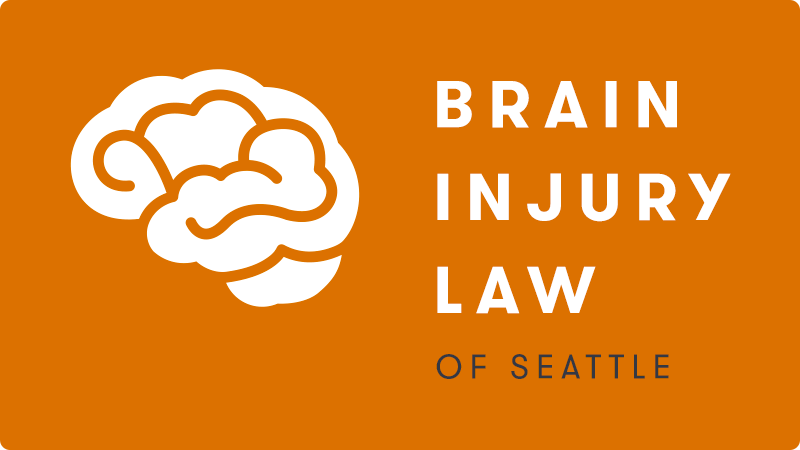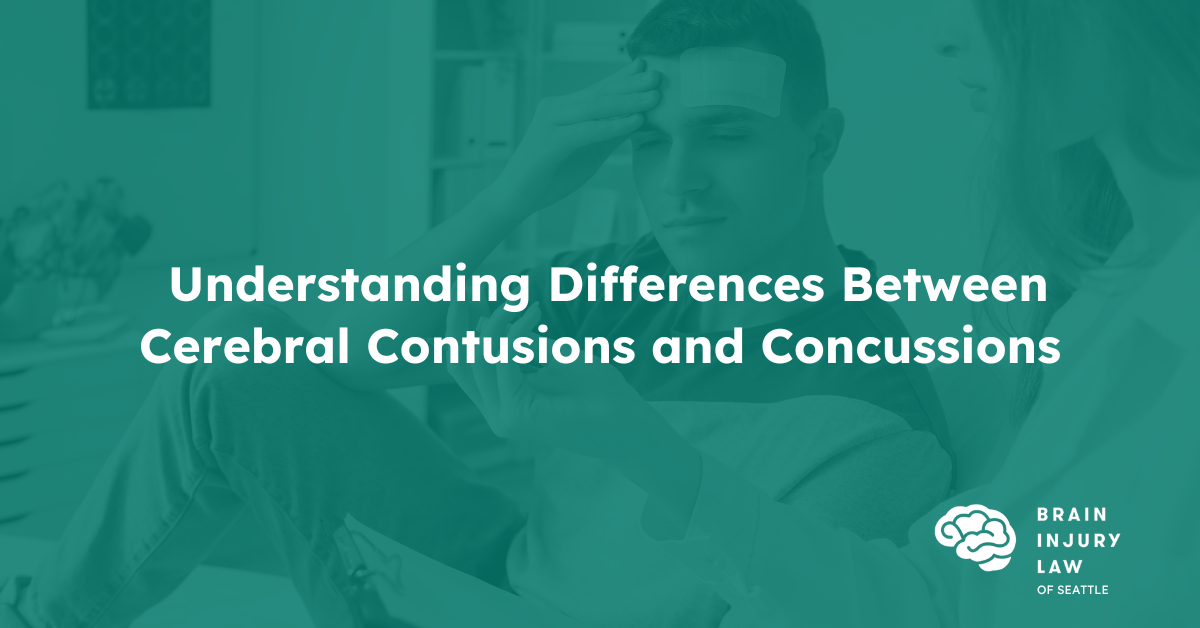Understanding Differences Between Cerebral Contusions and Concussions
Your brain is an incredibly complex organ—it has about 86 billion neurons, which just happens to be about the same number as there are galaxies in the known universe.
Because it’s so complex, powerful, and unique, it can be easy to forget that it’s an organ like any other. Just like the rest of your organs, your brain can be damaged, it can be bruised, and it can bleed.
While cerebral contusions and concussions are similar (and can even happen at the same time), they are different at a fundamental level.
In this article, you’ll learn what concussions and cerebral contusions are and why that difference is so important.
Page Contents
What is a Cerebral Contusion?
A cerebral contusion, which is a type of traumatic brain injury (TBI), is a bruise on your brain. “Contusion” is just a fancy word for “bruise.” Any bruise you get anywhere on your body is called a contusion. “Cerebral” just indicates that it’s your brain that’s being affected. They can also be called “hematomas.”
A bruise of any sort is blood pooling somewhere in your body because your blood vessels there have ruptured or burst. That’s why a bruise on your arm, for example, appears dark red, purple, or even black—that’s thick blood pooling beneath your skin.
Contusions can be caused by a wide variety of injuries—if you’re on blood thinners or other medications, you may be at a higher risk of having a contusion than you would otherwise. Drinking alcohol also increases your risk (it thins your blood).
Here are some of the most common causes:
- Car, truck, motorcycle, or e-scooter accidents
- Falls
- Sports injuries
- Physical assaults
- Workplace accidents
Contusions can result in serious, permanent harm to your brain, depending on how bad they are.
What Is a Concussion?
A concussion is an injury to your brain that’s the result of trauma—this could be anything from a violent punch to whiplash during a car accident.
There are many types of concussions, and just like with cerebral contusions, they range in severity.
A concussion can be caused by many of the same things that cause cerebral contusions. The key difference is that your brain can be damaged—sometimes very severely—without your blood vessels rupturing.
That’s because of the way your brain is structured and how delicate it is.
Understanding Your Brain—Delicate JELL-O
Unlike many of your other organs, your brain is incredibly delicate. Most people are shocked to realize just how fragile it really is—it’s not an exaggeration to say it’s the same consistency as JELL-O.
Imagine a bowl of JELL-O. If you smack the side of the bowl hard, it will shake—but not just a little bit. It shakes a lot, and it can shake so much that the JELL-O actually breaks. That’s just about how fragile your brain is.
Our bodies evolved to protect it with a thick skull, but there’s a drawback to having a hard shell of bone around your brain: your brain can bounce against the interior of your skull.
While the back of your skull is smooth and relatively safe, the front has many sharp points—especially around your nose—that can damage your frontal lobe.
However, it doesn’t even take a hit against the skull for your brain to be damaged. Simply twisting the brain quickly (like what might happen if a boxer were hit in the jaw at an angle) is enough to break all the tiny, delicate connections between your brain cells.
Your brain cells that do all the heavy lifting in your brain—that allow you to think and act—are called neurons. They’re also responsible for many of the unconscious processes happening constantly in your body, like breathing or digesting food. The tiny connections between them are known as synapses.
At a microscopic level, there are literally hundreds of trillions of synapses between your neurons, connections that are very, very fragile.
While your skull protects those connections, and so does a layer of cerebrospinal fluid that cushions your brain, if enough force hits your brain, those synapses get ripped apart. In many cases, those rips aren’t even visible on a normal MRI.
Even a small amount of force is enough to do this. Remember that JELL-O? Slapping the bowl sends a wave through it that you can see. That wave is enough to damage your synapses, preventing your neurons from communicating with each other.
Basically, you don’t just experience TBI symptoms because your neurons themselves are damaged—the “micro-damage” to synapses is possibly just as harmful.
The Difference Between a Concussion and Cerebral Contusion
The big difference between the two is bleeding. A cerebral contusion means blood is pooling in your brain. A concussion doesn’t involve bleeding.
You can have both at the same time, and you can have one without the other. They’re both considered traumatic brain injuries, and they both require immediate medical treatment.
What to Do If You Have a Contusion or Concussion
One of the few upsides of a contusion is that it’s often easier to see on an MRI or CT scan than some concussions.
Because so many concussions result in damage that doesn’t show up on a normal imaging, it’s often a good idea to get a specialized scan along with bloodwork if you’ve hit your head.
This can be a critical step to ensuring you get the right treatment in the right timeframe. It can also play a crucial role in proving in court that your brain has been damaged and that you deserve compensation.
If You’ve Been Injured and Have a Cerebral Contusion or Concussion, We’re Here to Help
If you’ve been injured and have a cerebral contusion or concussion—or even if you just suspect you have one as the result of an injury—we can help.
Click here to contact us today and schedule a free consultation. We’ll talk about your injury, the symptoms you’re struggling with, and how we can help.






